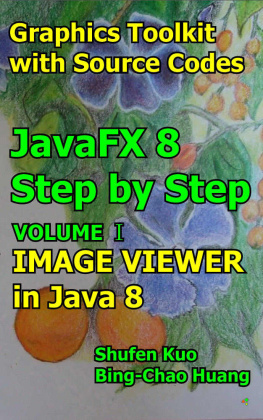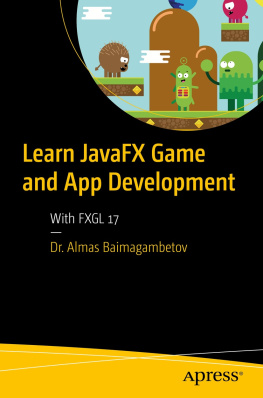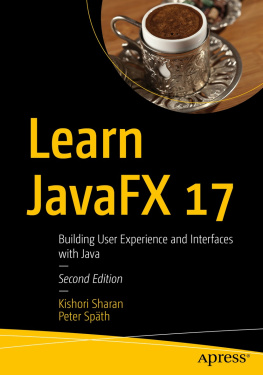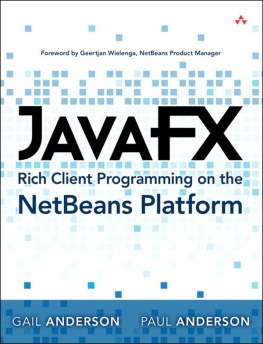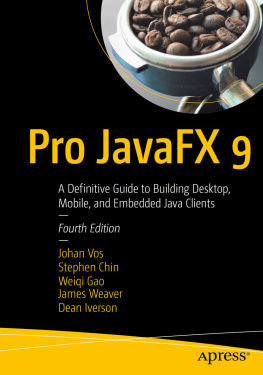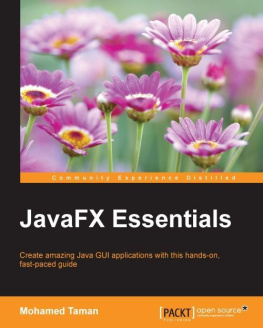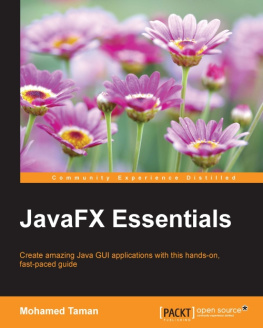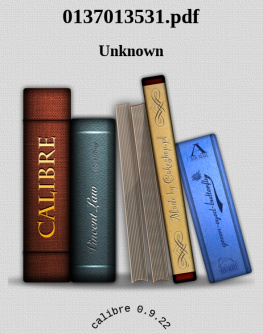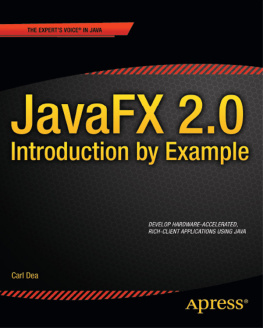Shufen Kuo - IMAGE VIEWER in Java 8: JavaFX 8 Tutorial
Here you can read online Shufen Kuo - IMAGE VIEWER in Java 8: JavaFX 8 Tutorial full text of the book (entire story) in english for free. Download pdf and epub, get meaning, cover and reviews about this ebook. year: 2016, genre: Computer. Description of the work, (preface) as well as reviews are available. Best literature library LitArk.com created for fans of good reading and offers a wide selection of genres:
Romance novel
Science fiction
Adventure
Detective
Science
History
Home and family
Prose
Art
Politics
Computer
Non-fiction
Religion
Business
Children
Humor
Choose a favorite category and find really read worthwhile books. Enjoy immersion in the world of imagination, feel the emotions of the characters or learn something new for yourself, make an fascinating discovery.
- Book:IMAGE VIEWER in Java 8: JavaFX 8 Tutorial
- Author:
- Genre:
- Year:2016
- Rating:5 / 5
- Favourites:Add to favourites
- Your mark:
IMAGE VIEWER in Java 8: JavaFX 8 Tutorial: summary, description and annotation
We offer to read an annotation, description, summary or preface (depends on what the author of the book "IMAGE VIEWER in Java 8: JavaFX 8 Tutorial" wrote himself). If you haven't found the necessary information about the book — write in the comments, we will try to find it.
GUIs of Java applications using JavaFX 8 which has become
a part of Java SE Development Kit 8 (JDK 8).
The primary objective is to provide a comprehensive handbook,
which brings forward the frequently used features and the essence of JavaFX.
The usages of APIs provided in JavaFX packages are illustrated
through the step-by-step development of a sophisticated graphics toolkit.
Complete source codes of the graphics toolkit,
a set of packages with reusable classes as well as embeddable JavaFX applications,
are included in the book series.
The following tables list all the source codes of drawtool library
offered in the prior four volumes of the book series:
PACKAGE NAME:
drawtool
SOURCE CODE FILE NAME:
ShapeDrawer.java
DrawPane.java
PACKAGE NAME:
drawtool.drawer
SOURCE CODE FILE NAME:
BezierCurveDrawer.java
CircleDrawer.java
EllipseDrawer.java
LineDrawer.java
PathDrawer.java
PolygonDrawer.java
PolylineDrawer.java
RectangleDrawer.java
RegularPolygonDrawer.java
ShapeMover.java
PACKAGE NAME:
drawtool.shape
SOURCE CODE FILE NAME:
RegularPolygon.java
PACKAGE NAME:
drawtool.io
SOURCE CODE FILE NAME:
DrawClipper.java
DrawLoader.java
DrawWriter.java
The following tables list all the source codes of
graphics applications offered in the prior four volumes of the book series:
PACKAGE NAME:
imageviewer
SOURCE CODE FILE NAME:
FileUtils.java
ImageViewer.java
SlideshowService.java
PACKAGE NAME:
jfxdrawtools
SOURCE CODE FILE NAME:
JFXDrawTools.java
Since contents are abundant, chapters are organized into volumes;
lets glance at the prior four volumes:
VOLUME I: DEVELOPING IMAGE VIEWING COMPONENTS
VOLUME II: DEVELOPING INTERACTIVE SHAPE DRAWING TOOLS
VOLUME III: DEVELOPING INTERACTIVE REGULAR POLYGON DRAWING TOOLS
VOLUME IV: DEVELOPING SKETCH SAVING AND LOADING APIS
More contents are in the process of development.
A useful Summary section is available at the end of each chapter;
it lists all the key aspects of JavaFX library featured in the chapter.
It helps you to look up fundamental capabilities of JavaFX engaged in this book series.
Here are some of essentials among others:
* Shape class in javafx.scene.shape package for 2D geometric primitives.
* FXML, a markup language which complies with the XML (Extensible Markup Language) format, to build GUIs.
* Properties and binding mechanism.
* Image class and ImageView class to load and display images.
* Concurrency capacity in javafx.concurrent package.
* FadeTransition and ParallelTransition applied onto image objects in a slide show function.
* Build-in layout panes in javafx.scene.layout package.
* And more...
To copy the complete source codes from this kindle e-Book,
Heres a suggestion:
1. Install Calibre, a free E book Management software, to your PC.
2. Use Add books function in Calibre to add the .mobi file of the e-Book to Calibre library.
3. Open the book from Calibre and copy the source codes to Java files.
Shufen Kuo: author's other books
Who wrote IMAGE VIEWER in Java 8: JavaFX 8 Tutorial? Find out the surname, the name of the author of the book and a list of all author's works by series.

